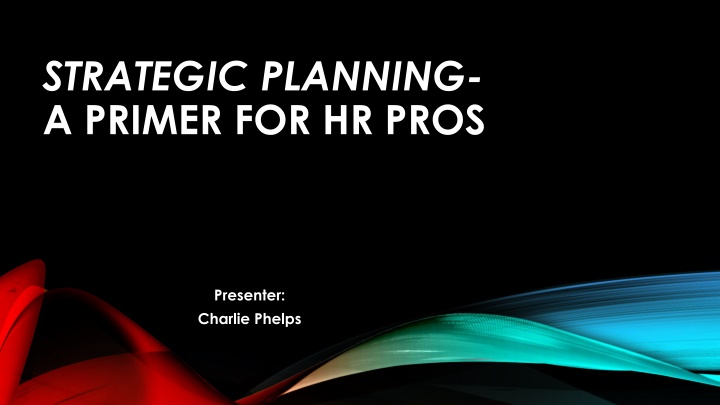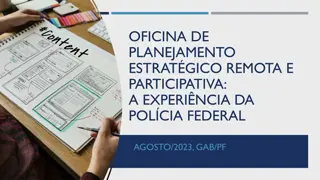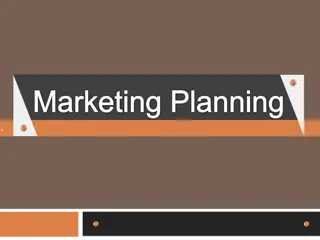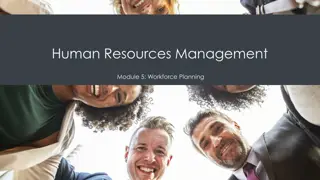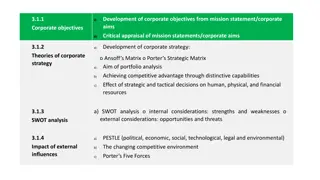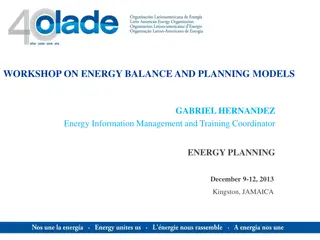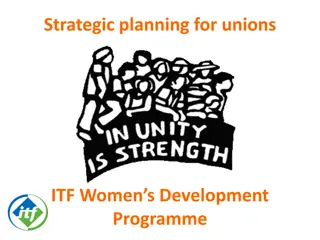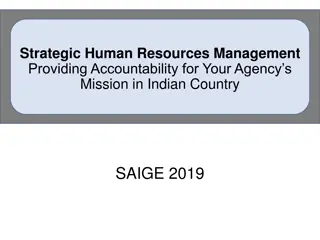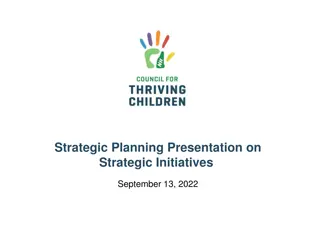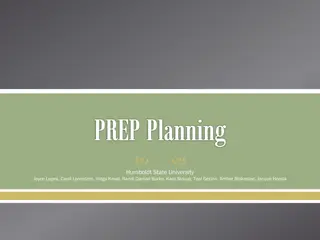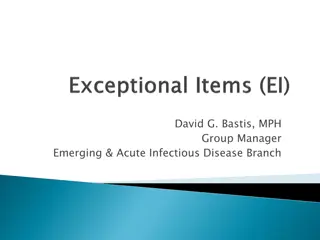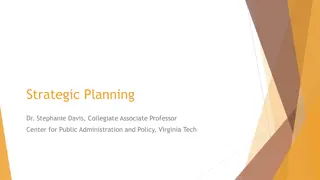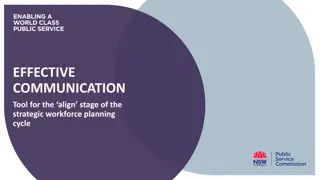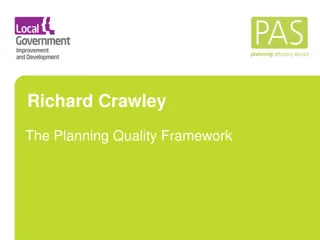Strategic Planning in HR: A Comprehensive Overview
Delve into the fundamentals of strategic planning for HR professionals with insights on strategy, generic strategies, strategic thinking, and strategic management processes. Explore the stages in strategic management, from mission determination to strategy formulation and implementation. Understand the importance of aligning HR with company vision, analyzing the human resource environment, and developing effective strategies to achieve organizational goals.
Download Presentation

Please find below an Image/Link to download the presentation.
The content on the website is provided AS IS for your information and personal use only. It may not be sold, licensed, or shared on other websites without obtaining consent from the author.If you encounter any issues during the download, it is possible that the publisher has removed the file from their server.
You are allowed to download the files provided on this website for personal or commercial use, subject to the condition that they are used lawfully. All files are the property of their respective owners.
The content on the website is provided AS IS for your information and personal use only. It may not be sold, licensed, or shared on other websites without obtaining consent from the author.
E N D
Presentation Transcript
STRATEGIC PLANNING- A PRIMER FOR HR PROS Presenter: Charlie Phelps
STRATEGY Strategy is the art of working out how to win in business and life. It involves understanding your environment, crafting a unique and valuable competitive position, and using your resources in such a way that you make best use of the opportunities open to you. James Manktelow Mind Tools CEO
Generic Strategies - How the firm intends to position itself to create value for its customers in ways that are different from those of competitors BUSINESS-LEVEL STRATEGIES Competitive Tactics - the competitive Actions firms take to grow and increase the strength of or protect their competitive positions.
STRATEGIC, TACTICAL, OR BOTH People Process See Handout
STRATEGIC THINKING Strategic thinking is the term used to describe the creative aspects of strategic management Focus on strategic intent Long-term orientation Consideration of past and present Ability to seize unanticipated opportunities Systems perspective Scientific approach
STRATEGIC MANAGEMENT Is the process through which organizations o Analyze and learn from their internal and external environments, o Establish strategic direction, o Create strategies that are intended to help achieve established goals, and o Execute those strategies . All in an effort to satisfy key organizational stakeholders.
STAGES IN STRATEGIC MANAGEMENT Mission Determination o Ensure HR is aligned with company vision & mission Strategic/Environmental Analysis o Human Resource environment o Human Resource legal environment o External environment Strategic Direction o Setting objectives Strategy Formulation o Human Resource planning Strategy Implementation & Control o Workforce utilization and employment practices o Reward and development system o Performance impact of human resource practices o Human Resource evaluation
Strategic Management Process External and Internal Analysis Strategy Formulation (corporate and business level) Strategic Direction Strategy Implementation and Control Strategic Restructuring 8
MISSION AND VISION Mission Vision What the organization is What the organization wants to become Frequently a vision is incorporated into the mission statement, as illustrated in this example: Our mission is to be the world s premier consumer products company focused on convenient foods and beverages. We seek to produce financial rewards to investors as we provide opportunities for growth and enrichment to our employees, our business partners and the communities in which we operate. And in everything we do, we strive for honesty, fairness and integrity . (Pepsico) Note also that this mission statement incorporates important values (Honesty , Fairness and Integrity)
INTERNAL ENVIRONMENTAL ANALYSIS o Internal stakeholders include managers, employees and the owners and their representatives (e.g., board of directors). o Internal analysis includes an evaluation of internal stakeholders andthe organization s resources and capabilities o Purpose of internal analysis is to determine strengths and opportunities for competitive advantage, and weaknesses and organizational vulnerabilities that should be corrected.
EXTERNAL ENVIRONMENTAL ANALYSIS The HR professional must understand the dynamic nature of the HRM environment, such as changes in labor markets, company culture and values, customers, shareholders, and the economy.
BROAD ENVIRONMENT The broad environment consists of domestic and global forces such as: o Socio-cultural trends (e.g. demographics) o Technological trends (e.g. internet) o Political trends (e.g. open markets) o Economic trends (e.g. growing economy) The broad environment forms the context within which the firm and its task environment exist.
THE BROAD ENVIRONMENT Technological forces Sociocultural forces THE TASK ENVIRONMENT Financial Intermediaries Competitors THE ORGANIZATION Owners/Board of Directors Managers Employees Suppliers Customers Unions Local communities Activists Government Political/Legal forces Economic forces
The Task Environment consists of external stakeholders -- groups or individuals outside the organization that are significantly influenced by or have a major impact on the organization -- such as: TASK ENVIRONMENT oCustomers oSuppliers oCompetitors oCommunities oFinancial intermediaries
Strengthsare firm resources and capabilities that can lead to a competitive advantage. SWOT ANALYSIS Weaknessesare resources and capabilities that the firm does not possess but that are necessary, resulting in a competitive disadvantage. TOOL #1 Opportunitiesare conditions in the broad and task environments that allow a firm to take advantage of organizational strengths, overcome organizational weaknesses, and/or neutralize environmental threats. Threats are conditions in the broad and task environments that may stand in the way of organizational competitiveness or the achievement of stakeholder satisfaction.
STRATEGIC DIRECTION Strategic direction involves Setting long-term goals and objectives Defines the purposes for which an organization exists and operates business ethics pertain to the moral obligations of businesses to individuals, groups (such as stakeholders) and society as a whole values define what matters when making decisions and what is rewarded and reinforced Strategic direction may be contained, in part, in a firm's mission and vision statements
PORTERS FIVE FORCES TOOL #2
THE FIVE FORCES
THE INDUSTRY LIFE CYCLE A Growth B Unit Sales Volume Maturity C Commodity or Decline Introduction Time 19
STRATEGY FORMULATION Strategy is an organizational plan of action intended to accomplish goals. Corporate strategy formulation refers to domain definition, or the choice of business areas. Usually decided by the CEO and the board of directors. Business strategy formulation involves domain direction and navigation, or how to compete in a given area. Usually decided by division heads and business unit managers. Functional strategy formulation contains the details of how the functional areas such as marketing, operations, finance, and research should work together to achieve the business-level strategy. Decisions made by functional level managers.
WELL-DEVELOPED FUNCTIONAL STRATEGIES 01 02 03 04 Business-level strategies are implemented at the functional level Decisions made in each functional area are consistent with each other Decisions made within one function are consistent with those made in other functions Decisions within functions are consistent with the strategies of the business
HR STRATEGIC PLANNING oThink of the HRM strategic plan as the major objectives the organization wants to achieve, and the HR plan as the specific activities carried out to achieve the strategic plan. In other words, the strategic plan may include long-term goals, while the HR plan may include short-term objectives that are tied to the overall strategic plan. oThe HR professional must understand the dynamic nature of the HRM environment, such as changes in labor markets, company culture and values, customers, shareholders, and the economy.
Defines approach to recruitment, selection, training, performance evaluation, performance rewards, and other key HR practices HUMAN RESOURCES STRATEGY o Effective human resources strategies can be excellent sources of competitive advantage. o HR managers serve a coordinating role between the organization s management and employees, and between the organization and external stakeholder groups o Important to establish effective human resources policies and communicate them to all of the managers in the organization who are involved in carrying them out.
Strategy implementationinvolves creating the functional strategies, systems, structures, and processes needed by the organization in achieving strategic ends. Strategic controlrefers to the processes that lead to adjustments in strategic direction, strategies, or the implementation plan when necessary. STRATEGY IMPLEMENTATION AND CONTROL Strategic restructuringinvolves a renewed emphasis on what an organization does well, combined with a variety of tactics to revitalize the organization and strengthen its competitive position.
ORGANIZATIONAL STRUCTURE The number and types of departments or groups, formal reporting relationships and lines of communication Structure is a means, not an end There is no one best structure Structure can constrain future strategic choices Administrative inefficiencies, poor service, communication problems or employee frustrations may indicated a strategy-structure mismatch
ORGANIZATIONAL CULTURE An organization s culture, the system of shared values that guides employee beliefs and behavior, influences the success of strategy implementation. Often reflects the values and leadership styles of top executives Human resource management practices can influence culture recruitment, training, performance evaluation Organizational energy intensity and extent to which it is directed towards achievement of firm goals
FACTORS THAT ENCOURAGE INNOVATION AND ENTREPRENEURSHIP Strategic direction that incorporates innovation and entrepreneurship Culture that encourages creative thinking and risk taking Top management support of entrepreneurship Open communications supported by an integrated information systems Valuing the ideas of every employee Large rewards for internal entrepreneurs Teamwork and collaboration A flat management hierarchy with decentralized decision making Organizational champions to gather resources Focus on learning Slack resources available to invest in entrepreneurship
FACTORS THAT DISCOURAGE INNOVATION AND ENTREPRENEURSHIP oStrategic direction that emphasizes financial returns or operating efficiency oCulture that rewards conformance and discourages novel ideas oTop management that encourages maintaining the status quo oClosed door offices and disorganized and ineffective information system. oAttention given mostly to researchers or managers oHarsh penalties for failures
FACTORS THAT DISCOURAGE INNOVATION AND ENTREPRENEURSHIP (CONT,) oAuthoritarian leadership o A tall hierarchy - a lot of bureaucratic red tape and many approval levels oApproval process that makes it difficult to gather new resources oExclusive emphasis on measurable outcomes oTight finances (high debt, few liquid assets)
A system to support managers in . Assessing whether the organization s strategy is accomplishing goals as intended STRATEGIC CONTROL SYSTEM Identifying areas needing attention
TYPES OF CONTROL oFeedback- Provides managers with performance information so that they can make adjustments if necessary oConcurrent- Provides real-time information used to control organizational processes oFeedforward Monitoring systems that help managers anticipate changes in their external and internal environments
Functions of feedback controls in organizations: Creating specific objectives or targets ensures that managers understand the plans and strategies that guide firm decisions FEEDBACK CONTROLS Motivate managers to pursue organizational interests Help managers decide when and how to intervene to make corrections
ELEMENTS IN A FEEDBACK CONTROL SYSTEM Identify Key Result Areas for Each of the Broad Goals Establish Targets for Each Result Area and a Time Frame for Accomplishment Establish Broad Goals Based on Mission, Vision, and Purpose Make a Specific Manager Responsible for Each Target Follow Up With Each Manager Develop an Action Plan for Accomplishing Each Target
A BSC IS TOOL #3 A BALANCED SCORECARD IS a performance metric used in strategic management to identify and improve various internal functions of a business and their resulting external outcomes. It is used to measure and provide feedback to organizations. THE BALANCED SCORECARD (BSC) IS a strategic planning and management system that organizations use to: Communicate what they are trying to accomplish. Align the day-to-day work that everyone is doing with strategy. Prioritize projects, products, and services. THE SYSTEM CONNECTS THE DOTS between big picture strategy elements such as mission (our purpose), vision (what we aspire for), core values (what we believe in), strategic focus areas (themes, results and/or goals) and the more operational elements such as objectives (continuous improvement activities), measures (or key performance indicators, or KPIs, which track strategic performance), targets (our desired level of performance), and initiatives (projects that help you reach your targets).
The BSC suggests that we view the organization from four perspectives, and to develop objectives, measures (KPIs), targets, and initiatives (actions) relative to each of these points of view: Financial: often renamed Stewardship or other more appropriate name in the public sector, this perspective views organizational financial performance and the use of financial resources THE 4 PERSPECTIVES OF A BSC Customer/Stakeholder: this perspective views organizational performance from the point of view the customer or other key stakeholders that the organization is designed to serve Internal Process: views organizational performance through the lenses of the quality and efficiency related to our product or services or other key business processes Organizational Capacity (originally called Learning and Growth): views organizational performance through the lenses of human capital, infrastructure, technology, culture and other capacities that are key to breakthrough performance
Increasing global complexity and interconnectedness, fueled by technological advancements Trends: Specialized, mobile and diverse labor pools, including those found outside home countries Education levels, income levels and access to capital will continue to grow worldwide THE FUTURE Increased concern about governance, sustainability and social responsibility; increased regulation New powerful competitors in global marketplace
18 ROLES.. FOR HR IN 2018 The Accelerator 1. Speed is of utmost importance. HR can help to accelerate processes and decision making. The pace in most organizations is too slow. The year is still the most important planning building block. HR can do a lot to help to increase the speed. Hire speedy persons. Get rid of, or redesign, slow and bureaucratic processes. Stop with one-size-fits-all concepts. Adopt Just-in time and get rid of Just-in-case . 2. The Challenger We need people who dare to challenge at the top. Group think is observed too often. The plans are always ambitious and will result in more growth. Nobody wants to be the party pooper. Nobody wants to be perceived as a blocker. This is where HR can show its independency, and challenge where others choose to be followers.
18 ROLES 3 & 4 3. The Connector In today s organization it is all about connections. HR must focus on building and strengthening the connections. Between countries. Between functional areas. Between old and young. Between Baby Boomers and Gen Y and Gen Z. Between old and new. Between early adaptors and followers. Between change lovers and stabilizers. Between inner circle and outer circle. Between leaders and followers. Between HQ and the people at the front. 4. The Data-cruncher Traditionally data analysis is not one of the core competencies of HR. It should be, and modern technology will help a lot. HR can have its sensors out wide in the organization. What is happening with the engagement levels of people in critical projects? What capabilities are slowly eroding? Moving people analytics from descriptive to predictive.
18 ROLES 5 & 6 5. The Designer Can organizations be beautiful? Can organizations be a place where it is fun to be? HR can play a more active role in workplace design. Functionality and efficiency: yes, but let s as HR add the people element. Let s also make sure what we design can fulfil the needs of different groups. Another type of designer is the employee journey designer (see role 7). 6. The Employee Champion One of the most undervalued roles in the original Ulrich model is finally getting some traction. For years HR has focused on becoming part of senior management (or al least getting as close as possible to senior management). Nobody wanted to be an administrative expert, and focusing on the employees was also very old fashioned. This is changing, and employee intimacy is becoming more important.
18 ROLES 7 & 8 7. The employee journey and the employee experience are becoming mainstream in 2018. Designing the journey, from start to finish, is becoming an important role of HR. Read: Where to start when you want to improve the employee experience? (https://hrtrendinstitute.com/2017/04/21/start-employee-experience/) 8. The Experimenter We can learn a lot of experiments. HR can drive experiments. Do not strive to design the global all-encompassing process, practice or system that will be future-proof. Time goes by and nothing happens. Start experiments with those parts of the organization that love something new. Implement, learn, adapt and start a new experiment. The Employee Journey Designer
18 ROLES 9 & 10 9. The Guardian of the Values Organizations and people become more and more values driven. Strong values need to be nourished and defended. HR leaders should be role models that through their behaviors show that they are living the values. 10. The Magician Top HR professionals can be magicians. For example, by producing surprising insights with the help of people analytics. Management and employees like surprising insights, and HR can provide them. Sourcing surprising candidates is another area where HR can add a lot of value.
18 ROLES 11 & 12 11. The Mediator The HR pro keeps her head cool. She is focused and immune to distractions. She finds time to mediate every day. Headspace is her favorite app. 12. The Performance Consultant Some people are better in giving feedback than others. It is probably better to make use of the capabilities of these people, then to train all people to give better feedback. Performance consulting is an excellent role for HR: helping good people to become better.
18 ROLES 13 & 14 13. The Receptionist Administrative Expert was the least desirable role in the Ulrich model (see also role 6). An important element in the HR service center is hospitality. If organizations investigate how employees experience their journey, they often mention how difficult it is to find relevant HR information. The intranet contains may pages, but to find the right information is cumbersome. If you try to contact the HR service center, they are difficult to reach. Hospitality should be high on the capability list of HR employees in the service center. Although chatbots will play an important role, for more complex issues we will need human interaction. Read: HR Operations in the lift (https://hrtrendinstitute.com/2017/02/20/hr-operations-in-the-lift/). 14. The Slacker Some time ago there was a nice blog with the title What happened to down time; the extinction of deep thinking & sacred space (http://99u.com/articles/6947/What-Happened-to-Downtime-The-Extinction-of- Deep-Thinking-Sacred-Space) . Downtime is needed. HR can be exemplary here as well. Do not plan meetings back-to-back. Do not judge people who allow themselves some slack.
18 ROLES 15 & 16 15. The Smooth Operator This role is related to role 13, the receptionist. The smooth operator knows her IT- stuff. HR processes and workflows are running smoothly in the background, and offer all the users (candidates, employees, managers) a world class experience. The smooth operator is invisible, but very important as the engine of HR. 16. The Storyteller 2018 will also be a year of storytelling. Through stories we can learn about the ambitions of the company. Through stories we can learn what living the values really means. Through stories we can connect the organization to the surrounding world. HR could be the master of storytelling.
18 ROLES 17 17. The Techie HR tech offers numerous opportunities. HR should be tech savvy, and be able to find solutions that can help to increase the impact of HR. Not an easy role. There are many solutions on the market, and the HR tech landscape is changing every day. Read: HR Tech Trends Often Ignored By HR https://hrtrendinstitute.com/2017/12/19/hr-tech-trends-often-ignored-by-hr/ Have a look at the HR Tech Community
18 ROLES 18 18. The Voice As one of the major HR trends for 2018, we mentioned Power to the People. o Many organizations are still used to work in a top-down way. In those organizations, also HR finds it difficult to approach issues in a different way. o Performance management is a good example. Changing the performance management process is often tackled as an organization wide issue, and HR needs to find the new uniform solution. o In line with the trend called The Consumerization of HR https://hrtrendinstitute.com/2017/01/09/consumerisation-hr/ employees are expected to take more initiative, being tired of waiting for the organization and HR, and wanting to be more independent of organizational initiatives. o If HR is clever, it senses the needs and ideas in the undercurrent of the organization, and acts as the voice that expresses these ideas.
COMMENTS EVALUATIONS THANK YOU!
